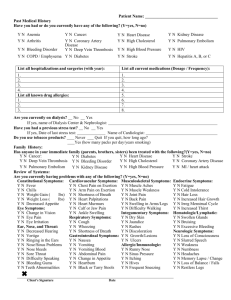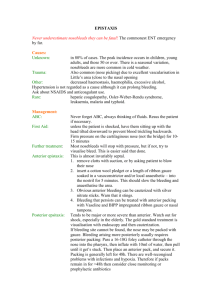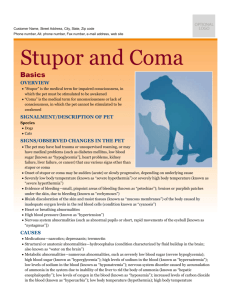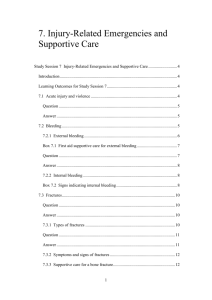Chapter 23: Bleeding
advertisement
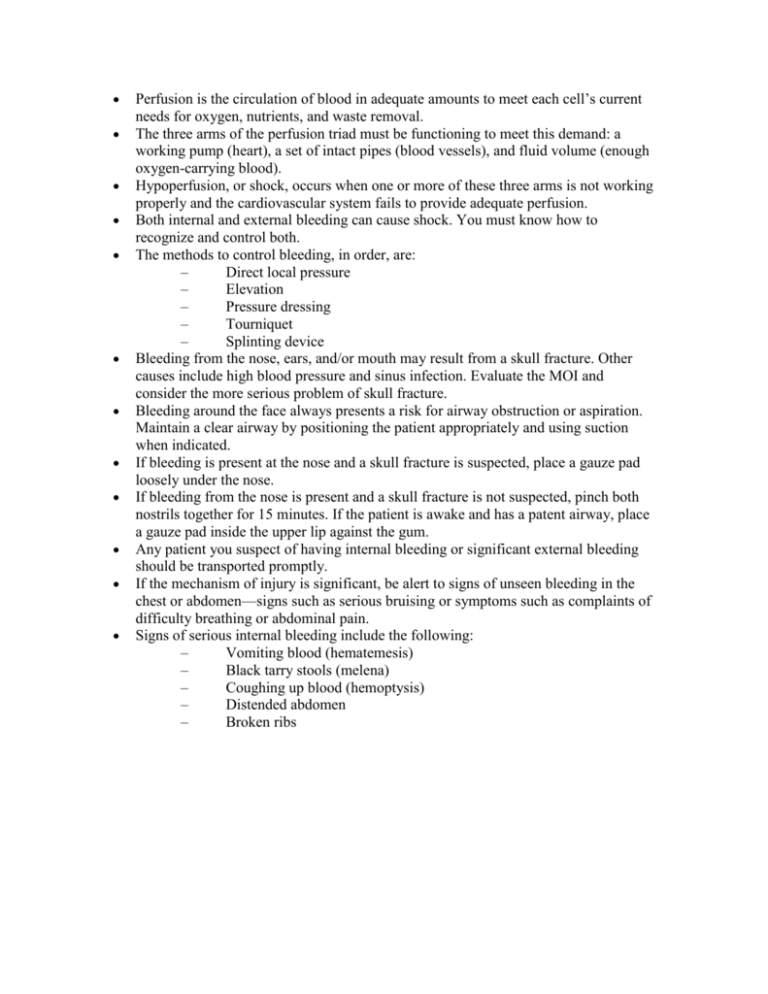
Perfusion is the circulation of blood in adequate amounts to meet each cell’s current needs for oxygen, nutrients, and waste removal. The three arms of the perfusion triad must be functioning to meet this demand: a working pump (heart), a set of intact pipes (blood vessels), and fluid volume (enough oxygen-carrying blood). Hypoperfusion, or shock, occurs when one or more of these three arms is not working properly and the cardiovascular system fails to provide adequate perfusion. Both internal and external bleeding can cause shock. You must know how to recognize and control both. The methods to control bleeding, in order, are: – Direct local pressure – Elevation – Pressure dressing – Tourniquet – Splinting device Bleeding from the nose, ears, and/or mouth may result from a skull fracture. Other causes include high blood pressure and sinus infection. Evaluate the MOI and consider the more serious problem of skull fracture. Bleeding around the face always presents a risk for airway obstruction or aspiration. Maintain a clear airway by positioning the patient appropriately and using suction when indicated. If bleeding is present at the nose and a skull fracture is suspected, place a gauze pad loosely under the nose. If bleeding from the nose is present and a skull fracture is not suspected, pinch both nostrils together for 15 minutes. If the patient is awake and has a patent airway, place a gauze pad inside the upper lip against the gum. Any patient you suspect of having internal bleeding or significant external bleeding should be transported promptly. If the mechanism of injury is significant, be alert to signs of unseen bleeding in the chest or abdomen—signs such as serious bruising or symptoms such as complaints of difficulty breathing or abdominal pain. Signs of serious internal bleeding include the following: – Vomiting blood (hematemesis) – Black tarry stools (melena) – Coughing up blood (hemoptysis) – Distended abdomen – Broken ribs


